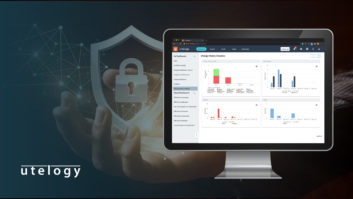
Chris Scurto, vice president of marketing and business development at ZeeVee Inc explains all you need to know about AV over IP
AV over IP (AVoIP) is a term that you will undoubtedly have read about and essentially is the streaming of audio and video content over an existing Ethernet network. This IP network can be a LAN or WAN, and is simply delivering content from sources to displays. Those sources can be anything from a local PC in a lecture hall or conference room, a streaming video server on the network, cloud based servers all the way to streaming services over the Internet.
It already surpasses anything that a conventional proprietary solution can offer, and with the development investment behind it, there is no doubt that the gap will become wider. This is because the intelligence resides in the network and the software running the equipment. Software now builds video walls and other features, not hardware. The possibilities for an app driven video network using IP infrastructure are endless.
What are the benefits of AVoIP?
AVoIP provides end users and network operators with significant opportunities for cost savings, flexibility and future proofing. It is also based on standardised and widely supported technologies.
Quality low latency video can be streamed over a 1Gbps network without affecting capacity, but to ensure its future proof many companies are already moving to 10GB.
Even where a new IP network needs to be installed to accommodate the volume of AV traffic, AVoIP technology simplifies cabling and installation, and importantly creates flexibility, allowing new end points to be added much more quickly and easily. Furthermore having something that the IT department understands means one less cost overhead for management.
What are the technical challenges?
The reason why AVoIP has taken longer to emerge than for example, Voice over IP, is largely due to bandwidth. Video content, especially streaming media, requires network bandwidth be managed carefully. However the cost of high bandwidth network switches, 10G in particular, has been dropping consistently, somewhere near 20% per year and now costs under $100 per port. Then AptoVision launched a chipset solution that allowed uncompressed video (right up to 4k60 4:4:4 and 10bit) to be sent over a 10G network. This means that you get so much more flexibility, future proofing, and ultimately cost saving, than any proprietary AV switch can ever offer. For example, ZeeVee’s ZyPer4K has the capability of delivering zero latency, 4K/UHD with HDR, video walls up to 5X5, and Multiview from one platform, something that you would normally need sevreal different vendors and potentially multiple types of end points .
Are there any drawbacks to AVoIP?
In the past poorly designed solutions have created problems and pain, such that many integrators and end users have had their fingers burnt. That is no longer the case and at ZeeVee we have always worked on making solutions that are easy to deploy and manage, helping to make integration more profitable and end users much happier with the installation process. Our management platform makes an installation a case of intuitive configuration not complex programming and awkward set up routines.
A case in point
To show what’s possible, a FTSE-quoted global manufacturing company, sought a video communications network, primarily to eliminate the need for staff to gather together in a single location to attend the quarterly ‘town hall’ presentations by the CEO.
Initially the requirement was to install the video conferencing capability at one site, allowing presentations to be live streamed. The site was equipped with industry standard CatX cables, which were perfect for sending audio and video from any HDMI source up to 100 meters away with a clear picture.
The installer, Duratec AV recommended an AVoIP installation through the existing site LAN. The customer’s IT department managed the project, and looked closely at network capacity before agreeing but using the existing infrastructure considerably reduced the cost of installation and increase the flexibility and capability of the deployment.
What is the future?
AVoIP is certainly helping to drive convergence. Innovative and progressive IT managers are running toward the opportunity as they see it as a way to better leverage their people and ultimately help to justify much needed network infrastructure upgrades. We are going to see “AV, not on my network” quickly become a thing of the past as more IT people come to the realization that AVoIP can help fund their network upgrade.
Enjoying this content?
Never miss a thing, by signing up to receive your complimentary copy of AV Technology Europe magazine (print or digital edition) and our weekly newsletters.
You can also follow us on Twitter @AVTechnologyEurope or contact our editor Michael Garwood directly via email: [email protected]







